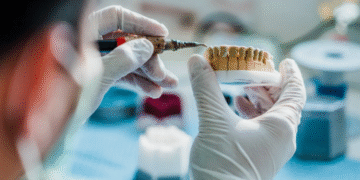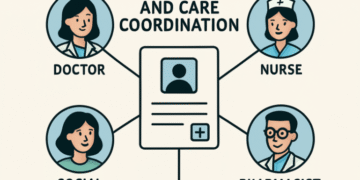Testosterone Replacement Therapy (TRT) has gained significant attention over the past few years as more people are becoming aware of the impact testosterone levels have on overall health. Testosterone is a hormone primarily associated with male health, but it is also present and essential in smaller amounts for women. For men, in particular, testosterone levels tend to peak in early adulthood and gradually decline with age. Low testosterone levels, however, can lead to various symptoms that impact both physical and emotional well-being.
It is essential to understand testosterone replacement therapy (TRT), its benefits, potential risks, and how it might affect individuals’ lives. This article provides insights into TRT and helps readers determine if it is right for them.
Signs and Symptoms of Low Testosterone
A natural decrease in testosterone levels is a normal part of aging, but some people experience a more significant decline than others. Symptoms of low testosterone can vary widely but often include:
- Low energy or chronic fatigue
- Reduced muscle mass and strength
- Increased body fat, especially around the abdomen
- Low libido or sexual dysfunction
- Mood changes, including irritability, anxiety, or depression
- Difficulty concentrating or “brain fog”
- Sleep disturbances
If you’re experiencing these symptoms, it doesn’t automatically mean you have low testosterone. Other health issues, lifestyle factors, and stress can cause similar symptoms. However, if these symptoms are affecting your daily life, it might be time to consider whether testosterone replacement therapy could benefit you.
How Does Testosterone Replacement Therapy Work?
Types of TRT Treatments
TRT is designed to supplement the body’s testosterone levels to restore balance and alleviate symptoms caused by low levels of this essential hormone. There are various forms of testosterone replacement available, including:
- Injections: Intramuscular injections are typically given every one to two weeks.
- Gels or Creams: These are applied daily to the skin, allowing testosterone to absorb through the skin into the bloodstream.
- Patches: Worn on the skin and replaced every 24 hours, they provide a steady dose of testosterone.
- Pellets are implanted under the skin, slowly releasing testosterone over several months.
Each type of TRT has pros and cons, and the best option depends on individual needs, preferences, and potential health risks. A medical professional specialising in hormone therapy can help you determine the most suitable option based on your situation.
Is TRT Effective?
Testosterone replacement therapy has shown effectiveness in improving symptoms of low testosterone for many individuals. Most people notice increased energy levels, improved mood, better muscle tone, and a resurgence in libido after starting TRT. However, the results vary depending on personal factors like age, health status, and the severity of testosterone deficiency. Some people experience a gradual improvement, while others may feel the effects sooner.
It’s also worth noting that TRT is not a “quick fix.” To maintain its benefits, TRT often requires a long-term commitment and regular monitoring by a healthcare professional to adjust dosages and minimise side effects.
Who Should Consider TRT?
Ideal Candidates for Testosterone Replacement
TRT is typically recommended for individuals who have been medically diagnosed with low testosterone, which is usually confirmed by a blood test. People who are ideal candidates for TRT generally exhibit symptoms of low testosterone that significantly affect their quality of life.
Men over 40 are often the most common candidates, as natural testosterone levels tend to decline with age. However, younger men with specific conditions or lifestyle factors that reduce testosterone levels also benefit. A healthcare provider specialising in hormone health will assess whether TRT is appropriate based on bloodwork and an evaluation of symptoms.
Potential Benefits of TRT
Testosterone replacement therapy has the potential to provide several life-enhancing benefits, including:
- Improved Mood and Mental Clarity: Many people report feeling more energetic, motivated, and clear-headed after starting TRT. Some even find relief from symptoms of depression and anxiety.
- Enhanced Physical Strength and Body Composition: As testosterone plays a significant role in muscle mass and fat distribution, TRT can help improve body composition by reducing body fat and increasing muscle tone.
- Increased Libido and Sexual Function: Low testosterone can contribute to sexual dysfunction and low libido. TRT often leads to improvements in these areas, restoring intimacy and satisfaction in relationships.
- Better Bone Density and Heart Health: Testosterone supports bone density, which can help reduce the risk of osteoporosis. Some studies suggest it may support cardiovascular health, although more research is needed.
While TRT can improve the quality of life for those with low testosterone, it’s not without risks and should always be approached with professional guidance.
TRT Risks and Considerations
Potential Side Effects
While TRT has notable benefits, being aware of potential side effects is essential. Common side effects may include:
- Acne or oily skin
- Swelling or tenderness in the breast area
- Changes in sleep patterns
- Increased red blood cell count, which may increase the risk of blood clots
- Potential impact on fertility, as TRT can reduce sperm production in some men
Is TRT Right for You?
Deciding if TRT is the right choice is a personal decision that should be made in consultation with a qualified healthcare provider. It’s essential to weigh the potential benefits against the possible risks and consider how TRT may impact your lifestyle and long-term health.
For areas where TRT clinics or specialists are readily available, such as the TRT Gold Coast region, local resources and specialists may provide valuable insights and tailored guidance. Consulting with a professional can ensure you receive comprehensive information and an individualised approach to hormone therapy.
Conclusion: Making the Decision
Testosterone replacement therapy is a promising solution for individuals experiencing the physical and emotional effects of low testosterone. With appropriate guidance and medical oversight, TRT can offer life-enhancing benefits, from increased energy and improved mood to better physical strength and sexual health.
However, it’s not a one-size-fits-all treatment, and individual results can vary. If you believe that low testosterone may be impacting your quality of life, seeking the advice of a hormone specialist and getting a comprehensive assessment is the best first step.
In conclusion, the decision to start TRT is personal and often complex. For those who leap, with informed choices and proper management, TRT can be a valuable tool in reclaiming energy, vitality, and confidence in daily life.










